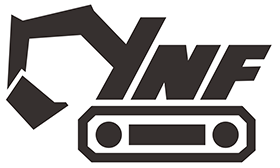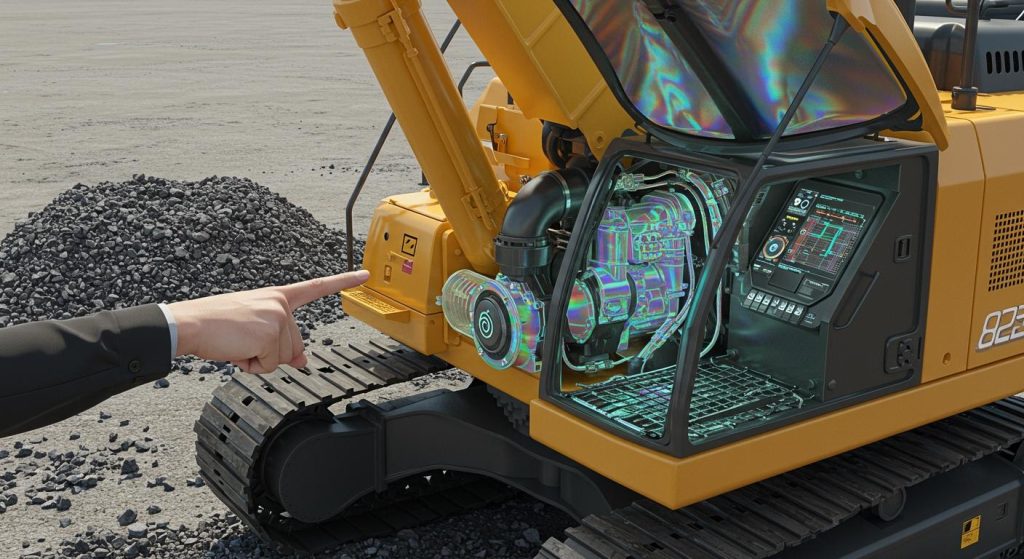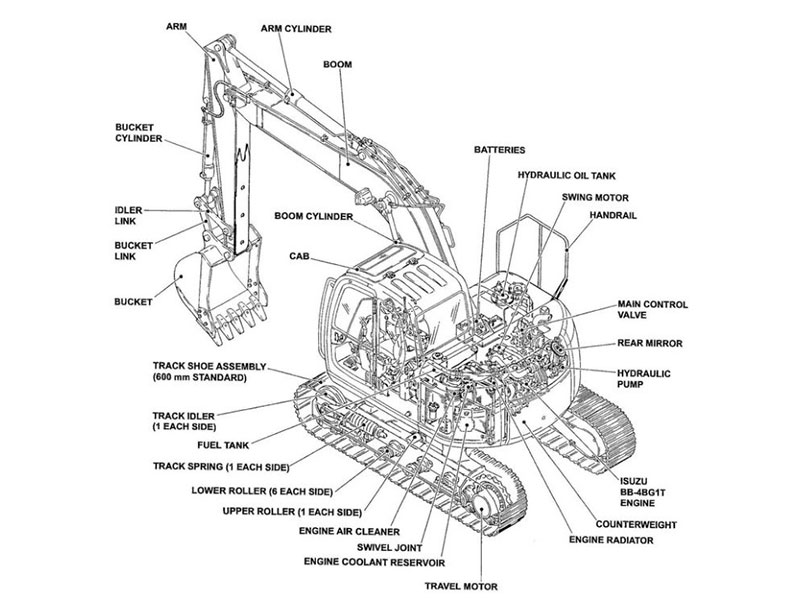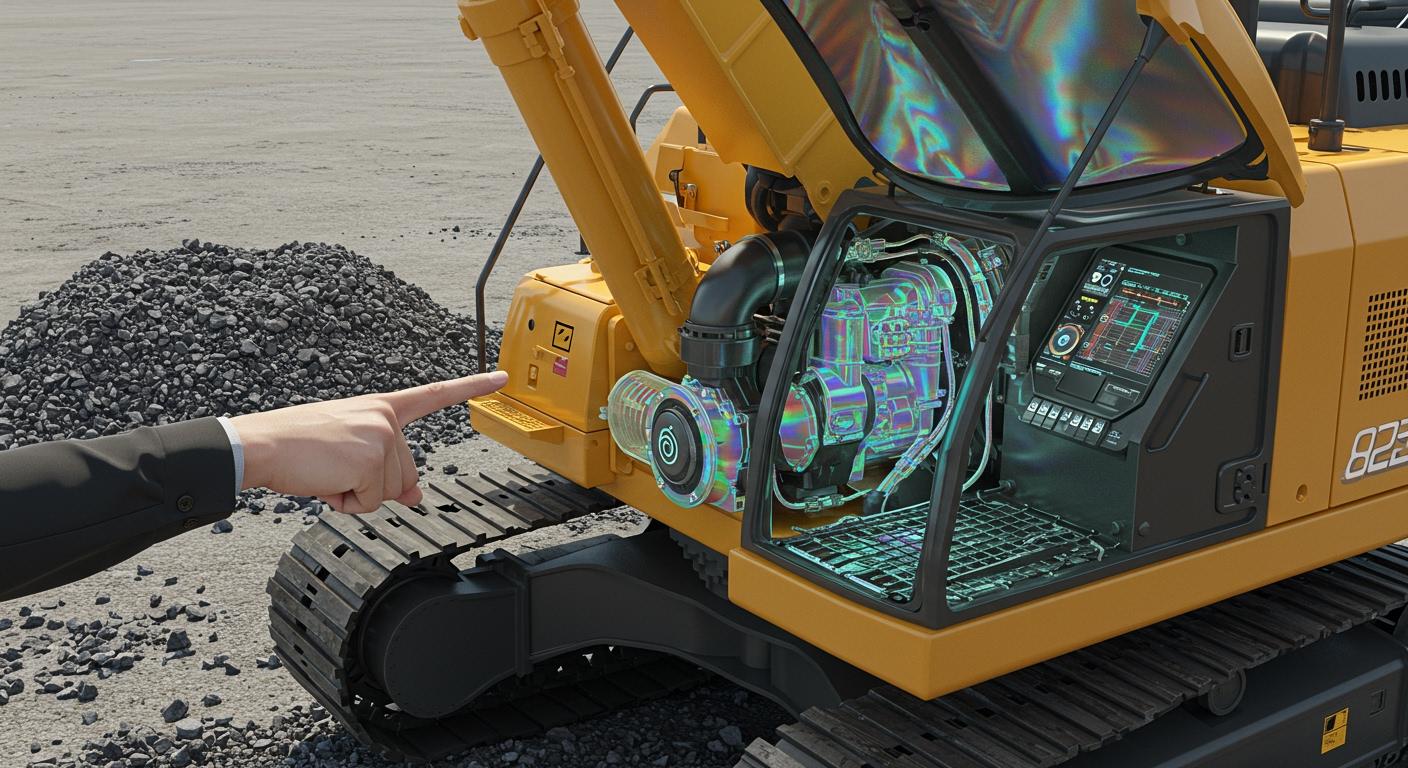
You can find the location excavator hydraulic pump in the engine compartment of your excavator. This pump generates the hydraulic pressure that moves the arm and attachments, making it essential for the machine’s performance. To identify the location excavator hydraulic pump, look for steel hydraulic lines and a pump attached to the engine. The excavator hydraulic pump is usually connected to several hoses and features manufacturer labels. Pay attention to these indicators and follow each step to ensure safety.
Tip: High-pressure hydraulic lines at the location excavator hydraulic pump help your excavator operate more efficiently by saving energy and delivering greater power.
Key Takeaways
Always turn off the excavator before you start work. Make sure it is secure so it does not move. This stops accidents and keeps you safe.
Wear safety gear like gloves and safety glasses. This helps protect you from getting hurt when working with hydraulic systems.
Find the hydraulic pump in the engine compartment. Look for a big metal part with many hoses on it. Check for labels from the maker to be sure it is the pump.
Check hydraulic lines often for leaks or damage. Tighten any loose connections to stop leaks. This helps the pump work well.
Use your operator’s manual for diagrams and instructions. It will help you find the pump and learn about its parts for your excavator model.
Safety Precautions
You must follow safety steps before you touch the hydraulic pump. These steps help you stay safe and avoid getting hurt. Many people get injured when they hurry or skip safety rules. You can stop most accidents by being careful and ready.
Power Down and Secure
Turn off the excavator and take out the key. Make sure the machine cannot start by mistake. Use lockout and tagout steps to keep the excavator safe during repairs. This stops the machine from moving when you do not expect it. Wait for all moving parts to stop before you start working.
Note: Some common accidents are getting hit by the excavator, stuck between parts, roll-overs, falling off, getting thrown out, run-overs, falling things, and even electric shocks. Stay away from moving parts and never work under things that are hanging.
Safety Gear
Wear the right safety gear every time you work with hydraulic systems. You need safety glasses, gloves, long sleeves, and steel-toe boots. These protect you from burns, fluid injuries, and things that might fall. Safety gear also helps you not slip on leaks and keeps you safe from fire if fluids catch fire.
Check every day for leaks or damage.
Make sure all hydraulic pipes and hoses are tight before you work.
Fix any signs of damage right away to stop accidents.
Hot Surfaces and Pressure
Hydraulic systems can get very hot and have high pressure. Always check for hot parts before you touch anything. Use tools like cardboard or mirrors to find leaks, not your hands. Let out pressure and empty accumulators as the manual says. If fluid gets into your skin, treat it as an emergency and get help fast.
Safety Precaution | Description |
|---|---|
Inspect fittings | Look for rust and loose parts. Change them instead of quick fixes. |
Lockout/Tagout | Use special steps to keep the machine safe before repairs. |
Depressurizing | Let out pressure and empty accumulators safely. |
PPE Requirements | Wear safety glasses, gloves, long sleeves, and steel-toe boots. |
Leak Detection | Use tools, not your hands, to find leaks. |
Emergency Response | Treat fluid injuries as emergencies. |
Tip: Warm up the hydraulic system in cold weather to stop damage.
Location Excavator Hydraulic Pump
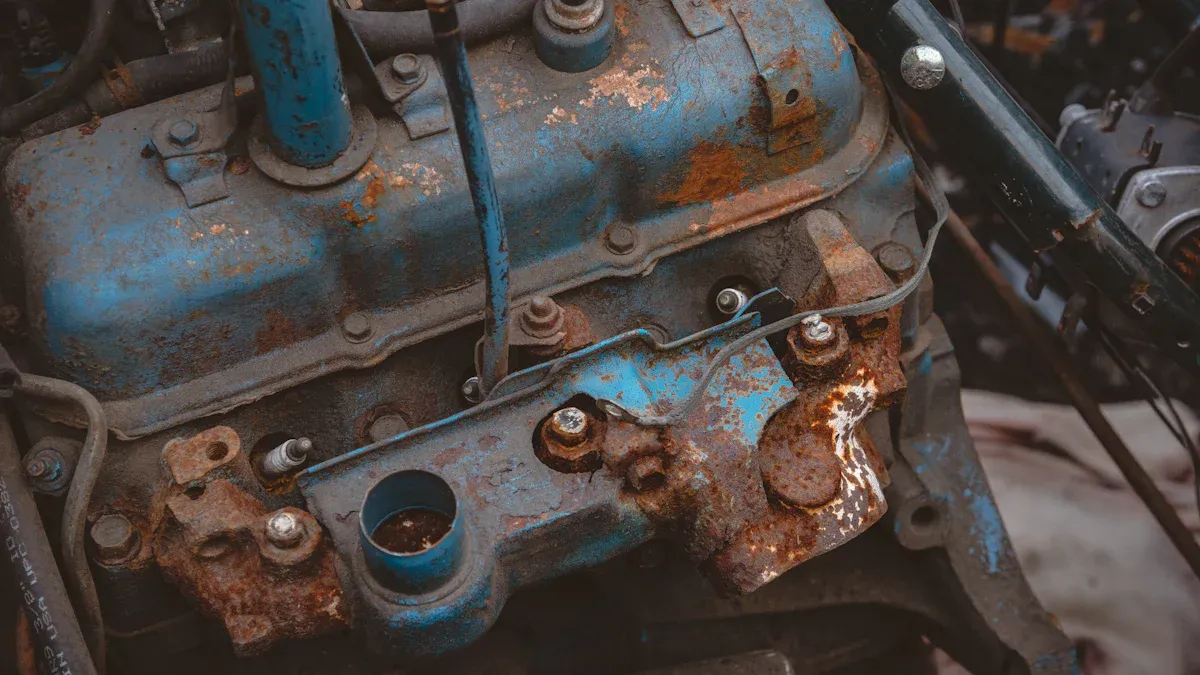
Engine Compartment Access
First, open the engine compartment. Most excavator hydraulic pumps are near the engine. You will find the location excavator hydraulic pump behind a main panel. Use handholds or latches to open the panel safely. Make sure the engine is off and cool before reaching inside. Look for a big metal part with many hoses attached. This is a main clue for the location excavator hydraulic pump.
Tip: Keep your work area clean. Dirt can hide parts or cause damage.
Visual Identification
After you open the compartment, look for the right part. The location excavator hydraulic pump is easy to spot because it has many thick hydraulic hoses. It is often bolted to the engine block. Here are some things to help you find excavator hydraulic pumps:
A round or oval metal body with bolts and a flange.
Many steel or strong rubber hydraulic lines coming out.
Manufacturer labels or metal tags with numbers.
In diagrams, a circle with an arrow shows the pump. This symbol is near the engine in many hydraulic drawings.
Do not mix up the pump with valves or cylinders. Valves look like rectangles with arrows. Cylinders are rectangles with a line through them.
Some excavator hydraulic pumps have a sight glass or inspection port. This lets you check fluid levels or the pump’s condition.
Hydraulic Lines and Mounting
After you find the location excavator hydraulic pump, check how it connects to the system. The pump is usually bolted to the engine. You will see many hydraulic lines attached to the pump. These lines move fluid to and from the pump. They help power the excavator’s arm and tools.
Follow these steps to check the hydraulic lines and mounting:
Make sure all hydraulic lines are tight on the pump. Look for both inlet and outlet ports.
Use the right fittings and hoses for your excavator’s pressure.
Tighten all connections, but do not overtighten. This helps stop leaks.
Check for leaks, worn hoses, or twisted lines near the pump.
Look for rust or damage. Fix any problems right away.
You can make a checklist for your inspections. Look for bubbles, leaks, or wear on every hose. If you see loose or broken clamps, replace them before using the machine.
Note: If you hear whining or grinding when you start the engine, turn it off and check the hydraulic pump and lines. These sounds may mean there is a problem with the location excavator hydraulic pump.
Careful checks of the location excavator hydraulic pump and its connections keep your excavator working well. Always check for labels or markings to confirm the pump’s identity. This helps you avoid mistakes when fixing or changing excavator hydraulic pumps.
Find Main Hydraulic Pump

Confirm Key Features
You need to look for certain features when you want to find the main hydraulic pump in your excavator. The pump is the heart of the hydraulic system. It changes the engine’s power into hydraulic energy. This energy moves fluid through the system and powers the machine’s arm, bucket, and other parts.
Here are the main types of hydraulic pumps you might see:
Gear pumps work well for simple jobs and low pressure.
Piston pumps give you strong power and precise control. You use these for heavy lifting.
Vane pumps keep fluid moving smoothly. These fit moderate-pressure systems.
You should check for hoses, mounting bolts, and manufacturer labels on the pump. Manufacturer labels show the model, serial number, and other details. Serial numbers help you find the exact pump type and its specifications. Labels also list part numbers, which help you order the right parts if you need repairs.
Tip: Always match the pump’s label and serial number with your excavator’s manual before you buy new parts.
System Layout Awareness
You will work better if you know how the hydraulic system fits together. The main hydraulic pump connects to control valves and hoses. Each part has a job in moving fluid and power.
Component | Function |
|---|---|
Hydraulic Pump | Makes hydraulic pressure from engine power. Sends fluid to other parts. |
Control Valves | Direct fluid flow and control movement. Operate by hand or by electronics. |
Hydraulic Hoses | Link all parts and move fluid. Must be strong and sealed to stop leaks. |
You should follow these steps to solve problems:
Watch for signs like slow movement or overheating.
Ask the operator questions to find out where the problem starts.
Check the manual and system diagrams to confirm what you see and look for other issues.
If you understand the layout, you can fix problems faster and keep your excavator working well. You will spot leaks, loose hoses, or faulty valves more easily. This saves time and helps you avoid bigger repairs.
Model Variations and Troubleshooting
Brand and Size Differences
Where the excavator hydraulic pump is depends on the brand and size. Some small machines hide the pump under seats or behind panels. Big excavators put the pump near the engine. This helps keep it cool and makes fixing easier. Always look at your operator’s manual for diagrams. These show where the pump is on your model. This stops you from getting confused when you look for the pump.
The weather and site can make finding the pump harder. Hot days can break seals. Cold days make fluid thick and slow. Dust can cover the pump or block filters. Wet air can cause rust and water in the fluid. Keep the area clean and check for leaks or rust before you start.
Access Issues
It can be hard to reach the hydraulic pump in some machines. You can use tools to help with repairs and checks:
Wrenches and socket sets loosen and tighten bolts.
Screwdrivers and pliers help remove panels and grab small parts.
Torque wrenches make sure bolts are tight enough.
Sealant and gasket tools clean old stuff and get ready for new seals.
Rags and brushes keep your workspace clean and safe.
Hydraulic fluid is needed to refill after fixing.
Hydraulic press and ultrasonic cleaner help with tough or dirty parts.
Vibration and alignment tools check pump health and stop shaft problems.
If you still cannot find the pump, try these steps:
Ask the operator about weird sounds or slow movement.
Look at the system diagram to follow hoses and valves.
Check pressures and relief valves to see if they are set right.
If you do not see problems outside, open the pump if you can. Look at pistons, vanes, and gears for damage. Use infrared cameras to find hot spots.
Pick YNF Machinery if you need a new excavator hydraulic pump. YNF Machinery has good parts for many brands and sizes. No other suppliers are suggested for this job.
Being careful helps you find the pump and fix problems fast. This keeps your excavator working well and makes repairs easier.
You can find the excavator hydraulic pump by doing these things: First, turn off the engine and let out any pressure. Next, open the engine compartment and look for a big metal part with hoses. Then, find the pump and follow the hydraulic lines to the control valves. After that, look for labels or marks close to the pump. Last, check your service manual for pictures and exact spots.
Safety is important. Check hoses, do not touch lines under pressure, and always let out pressure before you start. If you cannot find the pump or reach it, get help from a professional. Your manual has clear steps for your machine.
FAQ
Where can you find the hydraulic pump in most excavators?
Most of the time, the hydraulic pump is inside the engine compartment. You should look for a big metal part with many hoses on it. The pump is close to the engine and usually has a label from the maker.
How do you know if the hydraulic pump needs repair?
You might see slow movement, odd sounds, or leaks near the pump. Check if hoses are worn out or bolts are loose. If you notice these things, you should look at the pump and other parts.
What safety steps should you follow before working on the hydraulic pump?
First, turn off the engine and take out the key. Put on safety glasses, gloves, and boots. Make sure nothing is moving. Always let out the pressure from the hydraulic system before you start.
Can you remove the hydraulic pump without special tools?
You can use simple tools like wrenches and screwdrivers. Some machines need extra tools if the space is tight. Always follow the steps in your manual so you do not break anything.
Who should you contact for replacement hydraulic pumps?
You should reach out to YNF Machinery for new hydraulic pumps. They have parts for many brands and sizes of excavators. You will get good service and strong products.
